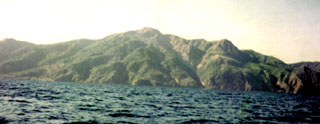Report on Paluweh (Indonesia) — 18 November-24 November 2015
Smithsonian Institution / US Geological Survey
Weekly Volcanic Activity Report, 18 November-24 November 2015
Managing Editor: Sally Sennert.
Please cite this report as:
Global Volcanism Program, 2015. Report on Paluweh (Indonesia) (Sennert, S, ed.). Weekly Volcanic Activity Report, 18 November-24 November 2015. Smithsonian Institution and US Geological Survey.
Paluweh
Indonesia
8.32°S, 121.708°E; summit elev. 875 m
All times are local (unless otherwise noted)
PVMBG reported that observers at a post located in Kampung Ropa, Keliwumbu Village, noted that during 3-17 November diffuse white plumes rose as high as 75 m above Paluweh. Seismicity remained relatively stable, and was characterized by shallow and deep volcanic earthquakes, and signals indicating emissions and avalanches. The Alert Level remained at 2 (on a scale of 1-4). Residents and tourists were reminded not to approach the summit within a radius of 1.5 km.
Geological Summary. Paluweh, also known as Rokatenda, forms the 8-km-wide island of Palu'e north of the volcanic arc that cuts across Flores Island. The broad irregular summit region contains overlapping craters up to 900 m wide and several lava domes. Several flank vents occur along a NW-trending fissure. A large eruption in 1928 included strong explosive activity accompanied by landslide-induced tsunamis and lava dome emplacement. Pyroclastic flows in August 2013 resulted in fatalities.
Source: Pusat Vulkanologi dan Mitigasi Bencana Geologi (PVMBG, also known as CVGHM)

